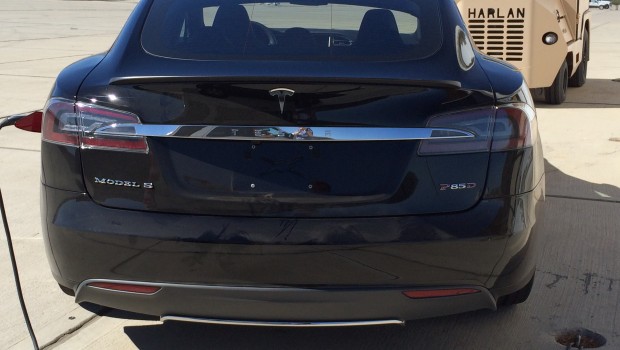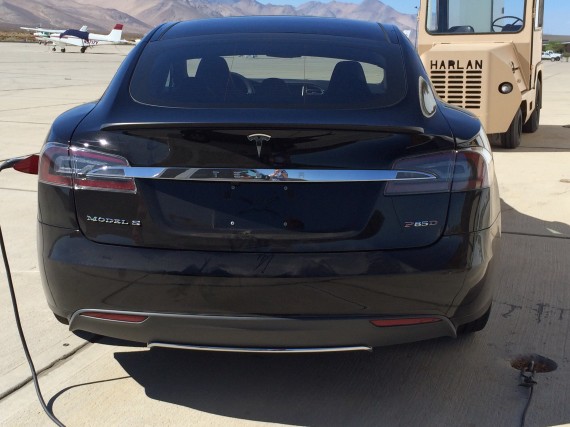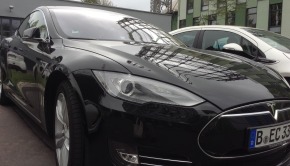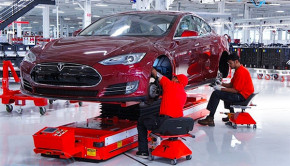Tesla Model S P85D Test Drive Blows Motor Trend Away
November 10th, 2014 by James Ayre
The Tesla Model S P85D — the all-wheel drive version of the popular sedan — has apparently blown the pants off the folks at Motor Trend, during the magazine team’s recent test drive.
Given that they’ve got (or have had) access to pretty much every high-end, high-performance vehicle out there, the value of their praise is certainly high, and speaks to the impressive qualities of the new “Tesla Dual Motor Drive.”
I guess that we shouldn’t be surprised, though — Elon Musk has been hyping it from the start, stating that the purpose behind it was to build a car with the same acceleration as the infamous Mclaren F1 HyperCar. And Musk does tend to deliver, doesn’t he? (Though, I have real doubts about his goals with regard to making it to Mars….)
Back to the Tesla D: that purpose was achieved, as the new vehicle can accelerate from 0 to 60 MPH in 3.2 seconds — providing a “rail-gun rush” of shiftless acceleration, as Motor Trend put it. The D also possesses three driving modes — including one dubbed as the “Insane” setting.
Motor Trend seems to get a bit carried away with excitement in its breakdown. For example: “The torque impacts your body with the violence of facing the wrong way on the train tracks when the whistle blows. Within the first degree of its first revolution, 100% of the motors’ combined 687 lb-ft slams the sense out of you. A rising-pitch ghost siren augers into your ears as you’re not so much accelerating as pneumatically suctioned into the future. You were there. Now you’re here.”
Gas 2 provides slightly toned-down commentary (only slightly, though):
While some might bemoan the lack of sound, it seems to me humanity adapted to the uncouth manner in which our automobiles adopted, relating on some primal level the relationship between power and noise. But the quiet confidence with which the Model S accelerates speaks to another level of automotive enthusiast, the kind that doesn’t have to show off his two-ton metal penis every chance he gets.
I tend to agree — it certainly seems like there’s a potential market there for a more low-key high-performance vehicle. And the Model S P85D certainly delivers on all fronts — high performance, a classy low-key look, and it’s electric as well. What more could you ask for?
Image Credit: Tesla Motors
Keep up to date with all the hottest cleantech news by subscribing to our (free) cleantech newsletter, or keep an eye on sector-specific news by getting our (also free) solar energy newsletter, electric vehicle newsletter, or wind energy newsletter.
-
Gbrandstetter
-
Peter T from Oz
-
Koenraad Coel
-
Peter T from Oz
-
Bob_Wallace
-
-
-
-
VFanRJ
-
http://fractalicious.ca/ Adam Grant
-
Gbrandstetter
-
-
Bob_Wallace
-
Koenraad Coel
-
-
Peter T from Oz
-
Koenraad Coel
-
RobS
-
GregW
-
Koenraad Coel
-
watchingfromabove
-
QKodiak
-
-
-
Gbrandstetter
-
-
Peter T from Oz
-
Peter T from Oz
-
-
-
Michelle F. Becker
-
PeterNemere
-
David in Bushwick
-
Bob_Wallace
-
David in Bushwick
-
-
-
JamesWimberley
-
Bob_Wallace
-
patb2009
-
GregW
-
-

























